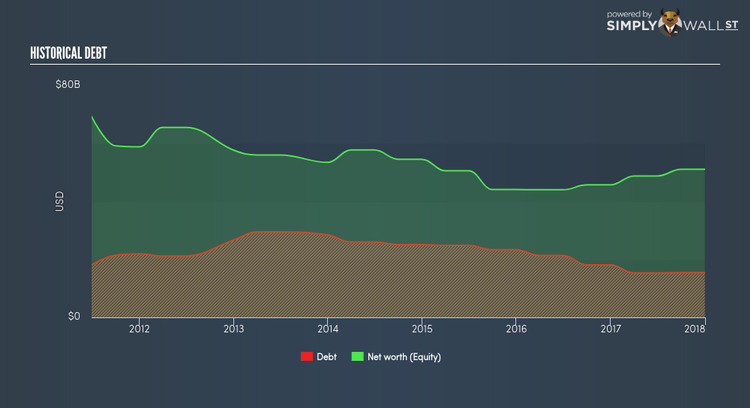Is Rio Tinto Limited (ASX:RIO) A Financially Sound Company?

Rio Tinto Limited (ASX:RIO), a large-cap worth AU$141.90B, comes to mind for investors seeking a strong and reliable stock investment. One reason being its ‘too big to fail’ aura which gives it the appearance of a strong and stable investment. However, the health of the financials determines whether the company continues to succeed. Today we will look at Rio Tinto’s financial liquidity and debt levels, which are strong indicators for whether the company can weather economic downturns or fund strategic acquisitions for future growth. Remember this is a very top-level look that focuses exclusively on financial health, so I recommend a deeper analysis into RIO here. View our latest analysis for Rio Tinto
Does RIO produce enough cash relative to debt?
Over the past year, RIO has reduced its debt from US$18.15B to US$15.45B , which comprises of short- and long-term debt. With this reduction in debt, RIO currently has US$11.61B remaining in cash and short-term investments for investing into the business. Moreover, RIO has generated US$13.88B in operating cash flow over the same time period, resulting in an operating cash to total debt ratio of 89.85%, meaning that RIO’s operating cash is sufficient to cover its debt. This ratio can also be a sign of operational efficiency as an alternative to return on assets. In RIO’s case, it is able to generate 0.9x cash from its debt capital.
Can RIO meet its short-term obligations with the cash in hand?
At the current liabilities level of US$11.35B liabilities, the company has maintained a safe level of current assets to meet its obligations, with the current ratio last standing at 1.69x. For Metals and Mining companies, this ratio is within a sensible range since there’s sufficient cash cushion without leaving too much capital idle or in low-earning investments.
Is RIO’s debt level acceptable?
With a debt-to-equity ratio of 30.23%, RIO’s debt level may be seen as prudent. RIO is not taking on too much debt commitment, which can be restrictive and risky for equity-holders. We can test if RIO’s debt levels are sustainable by measuring interest payments against earnings of a company. Net interest should be covered by earnings before interest and tax (EBIT) by at least three times to be safe. In RIO’s case, the ratio of 19.51x suggests that interest is comfortably covered. High interest coverage serves as an indication of the safety of a company, which highlights why many large organisations like RIO are considered a risk-averse investment.
Next Steps:
RIO has demonstrated its ability to generate sufficient levels of cash flow, while its debt hovers at an appropriate level. Furthermore, the company exhibits an ability to meet its near-term obligations, which isn’t a big surprise for a large-cap. Keep in mind I haven’t considered other factors such as how RIO has been performing in the past. I recommend you continue to research Rio Tinto to get a better picture of the stock by looking at:
Future Outlook: What are well-informed industry analysts predicting for RIO’s future growth? Take a look at our free research report of analyst consensus for RIO’s outlook.
Valuation: What is RIO worth today? Is the stock undervalued, even when its growth outlook is factored into its intrinsic value? The intrinsic value infographic in our free research report helps visualize whether RIO is currently mispriced by the market.
Other High-Performing Stocks: Are there other stocks that provide better prospects with proven track records? Explore our free list of these great stocks here.
To help readers see pass the short term volatility of the financial market, we aim to bring you a long-term focused research analysis purely driven by fundamental data. Note that our analysis does not factor in the latest price sensitive company announcements.
The author is an independent contributor and at the time of publication had no position in the stocks mentioned.

